The many ways lasers help us see the world more clearly
- Published
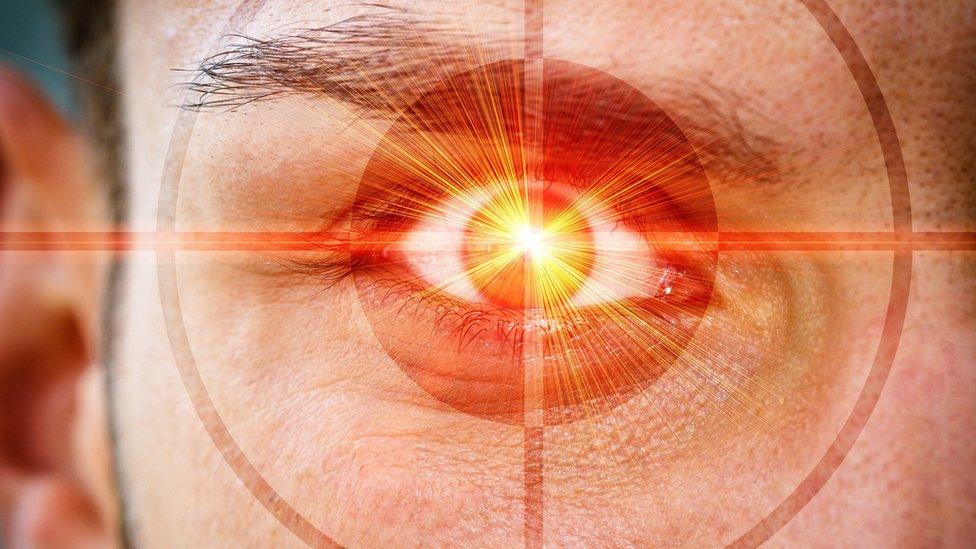
Lasers are used in diverse ways, from surgery to mapping, pest control to warfare
Think of lasers and what springs to mind? Ming the Merciless and his death ray in Flash Gordon? The planet-destroying Death Star in the Star Wars films? Or James Bond nearly getting bisected in Goldfinger?
Weapons, in other words. And yes, the military has always had a strong interest in deploying these highly-concentrated beams of light to blow missiles or satellites out of the sky.
Only recently, defence and aerospace firm Lockheed Martin trialled a 30-kilowatt laser called Athena that managed to burn a hole in a truck engine a mile away.
And in October, it revealed that it was developing a new generation of "super" lasers that funnel several lasers into one very powerful beam, with the eventual intention of mounting one on a US army vehicle.
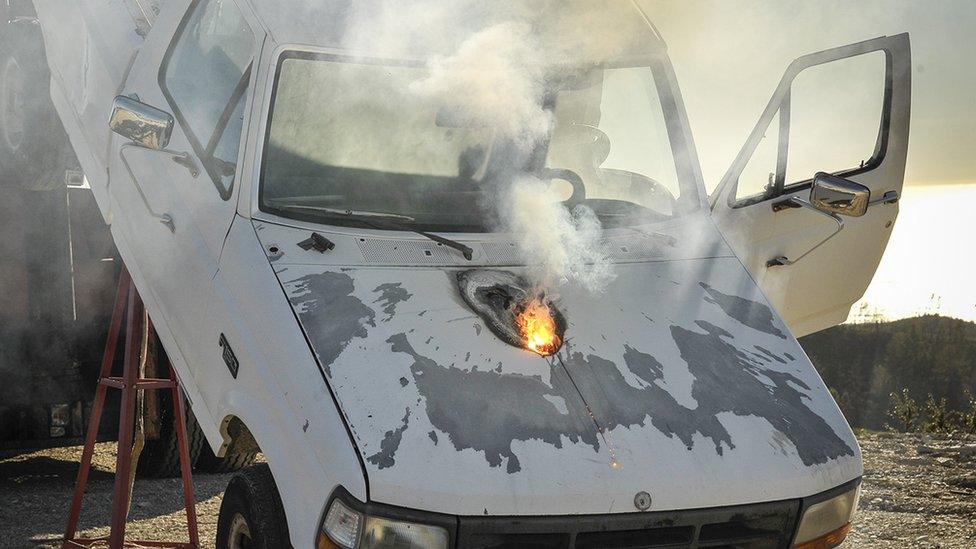
This is what Lockheed Martin's Athena laser did to a car a mile away
But lasers have also had a long history of peaceful civilian use in devices as diverse as CD players, medical scanners, fibre optic cables and crime detection kits.
Medicine and surgery are being transformed thanks to highly accurate laser scalpels and laser diagnostics.
Now lasers could even help us see through walls and into the earth.
Highly accurate
M Squared, a laser and photonics specialist, has just launched the UK's first commercial atom interferometer - a device that makes ultra-precise measurements of forces such as gravity.
The device uses lasers to cool atoms to near absolute zero - colder than deep space. Under the weird laws of quantum mechanics, these atoms can then technically occupy two places at the same time. When they're recombined, finely tuned laser beams measure the effects.
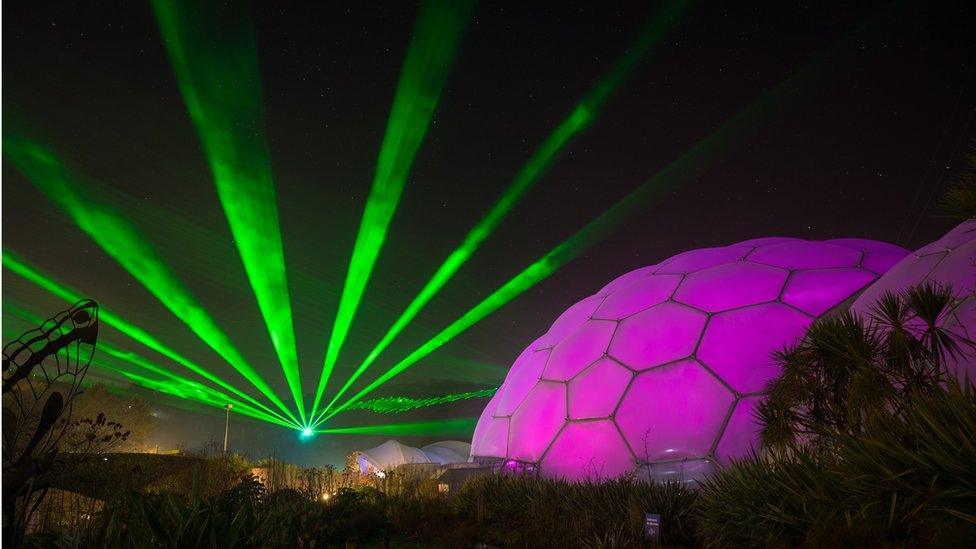
Lasers have far more uses than providing pretty light shows
Its developers say it could enable us to see people behind walls, detect underground infrastructure without digging holes, and develop navigation systems that do not rely on GPS.
"Extremely sensitive measurements of gravitational acceleration can be used to carry out underground mapping to detect oil and mineral deposits; the early detection of sinkholes; surveying of civil infrastructure; and on space missions," says Dr Graeme Malcolm, M Squared's chief executive.
"Atomic interferometers that are sensitive to magnetic fields will also be used for measuring brain activity in the fight against Parkinson's disease."
Seeing the past
Lasers have also been helping us see into the past.
Earlier this year archaeologists uncovered a new vast network of cities and roads in the thick jungles around the ancient Cambodian temple complex of Angkor Wat, following an aerial survey using Lidar (light detection and ranging).
The laser pulses were able to delve beneath the foliage in a way no other technology could. Lidar is also proving crucial in mapping our cities to inform the autonomous vehicles of the future.
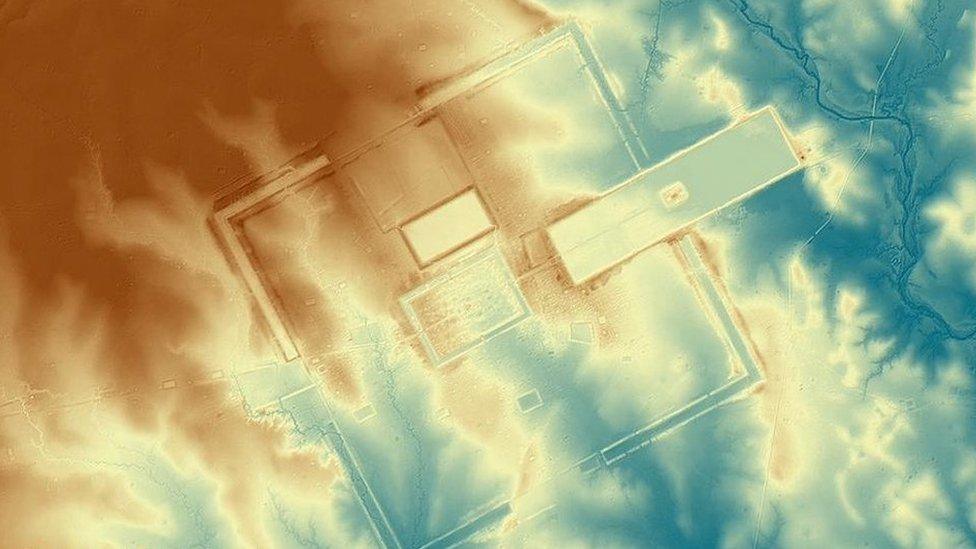
Beneath the forests of Cambodia, Lidar photography spotted the remains of huge cities
And while Goldfinger's laser may have threatened to give Sean Connery a falsetto singing voice, could it have formed a "laser wall" to protect a farmer's crops from rats and other pests?
A trial funded by the European Commission will see a laser called the Agrilaser Autonomic being deployed in Scotland, the Netherlands and Spain to protect farmland, firing laser beams that are perceived by critters as a physical danger.
This means they stay clear of crops so farmers don't have to use as much pesticide.
Speed of light
Lasers could also have a huge impact on the world of computing.
Silicon photonics may sound like a $10,000-a-day Hollywood clinic, but it refers to a technology that could have a huge impact on computing.
Traditionally, the industry has relied on electrical conductors to carry data along computer chips, but the explosion in data caused by the internet of things means we need a better way of handling it all,
Silicon photonics transmits data using laser light fired down optical fibres. It's so fast, you'd be able to download a high-definition film in less than a second.
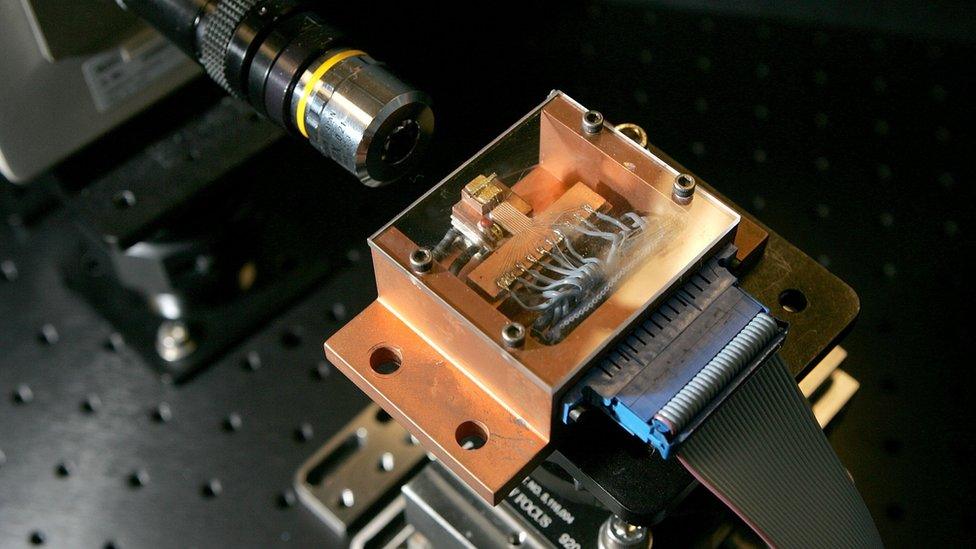
Intel's silicon laser computer chip promises faster data transfers
This is literally "computing at the speed of light".
As well as using it to improve computer chips and replace less efficient copper cabling between data centres, companies like Intel are trying to embed it into computer architecture.
As well as lightning fast speeds, the technology promises much greater energy efficiency and lower costs.
"The main target of silicon photonics is to enable the continuation of the explosion in demand for data, hence the current applications in data centres," says Prof Graham Reed, head of silicon photonics at the University of Southampton.
"Electronics is not able to continue to go faster and faster indefinitely without suffering huge heating, hence the need to communicate optically," he says.
"The longer-term future demands of connecting our lives digitally, whether it be for entertainment, healthcare, business, transport et cetera, means that more data will be required and therefore more and more optical interconnectivity.
"It's almost only limited by our imagination."
Light fantastic
Essentially a tube that concentrates light over and over again until it emerges as a very powerful beam, the laser - or Light Amplification by Stimulated Emission of Radiation - was first postulated by Albert Einstein.
Theodore Maiman developed the world's first laser in 1960, although other scientists had patented designs earlier than this.
Since then, they have been refined and refined to become the highly accurate precision tools we use today.
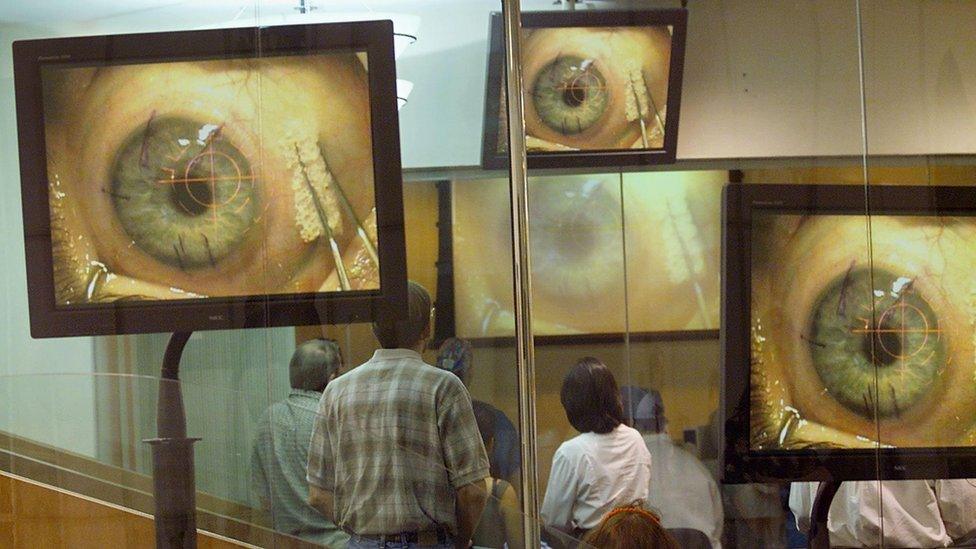
Laser eye surgery has been around for decades
Companies like Lockheed will always look to "weaponise" such technology, but the firm has also developed lasers for welding and cutting machines; 3D printers; and kit to decommission nuclear power stations, effectively scrubbing contaminated materials from the old buildings.
Light, it seems, has an almost unlimited number of uses.
Follow Technology of Business editor Matthew Wall on Twitter, external